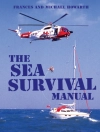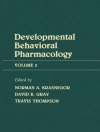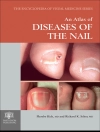Urolithiasis: Basic Science and Clinical Practice is a comprehensive text that assists urologists in defining the best choice of treatment for each case through a balanced presentation of underlying science, diagnostic methods and practical tips, with additional discussions on educational issues, costs and management of resources.
This user-friendly practical resource is replete with full-color illustrations and radiographs, covering all aspects of stone disease, and offering perspectives from Europe, the Americas, China, South Asia, Africa, and Australia. Topics include the biochemical and physiological basis of stone formation, treatment options, complications, assessment of techniques and technologies available, and guidelines on the prevention of stone recurrence.
Urolithiasis: Basic Science and Clinical Practice is the definitive text on stone disease and is a must read for young consultants starting a new practice, and urologists in residence and training.
Inhaltsverzeichnis
Part I: Epidemiology.- 1. Epidemiology of Kidney Stones in the European Union.- 2. Epidemiology of Stone Disease in North America.- 3. Epidemiology of Stone Disease in Pakistan.- 4. Epidemiology of Stone Disease in Northern India.- 5. Epidemiology of Stone Disease in Kerala, South India.- 6. Epidemiology of Stone Disease in China.- 7. Epidemiology of Stone Disease in South America.- 8. Epidemiology: South Africa and Sub-Saharan Africa.- 9. Epidemiology of Stone Disease in Australia.- 10. Epidemiology of Stone Disease in Saudi Arabia with an Overview of the Regional Differences.- 11. Epidemiology of Stone Disease in Iran.- 12. Epidemiology of Stone Disease Over a 40-Year Period in Japan.- 13. Epidemiology of Stone Disease in the Russian Federation and Post-Soviet Era.- 14. Renal Stone Disease in Different Racial Groups.- Part II: Etiology.- 15. Stone Composition and Morphology: A Window on Etiology.- 16. The Genetics of Kidney Stones.- 17. Familial Clustering of Stone Disease.- 18. Uric Acid Nephrolithiasis: Basic and Clinical Aspects.- 19. Oxalate and Urolithiasis.- 20. Anti-Inflammatory Proteins in Kidney Stone Matrix.- 21. Physiology of Renal Handling of Citrate.- 22. Urinary Citrate and Stone Disease.- 23. Renal Tubular Acidosis and Stone Formation.- 24. Nephrolithiasis and its Interrelationship with Vitamin D, Parathyroid Hormone, and Calcium.- 25. Current Understanding of the Role of Randall’s Plaque.- 26. Melamine-Associated Urinary Stone.- 27. Trace Elements in Urolithiasis.- 28. Infection Stones.- 29. Epidemiological and Etiological Considerations.- Part III: Diagnosis .- 30. Diagnosis of Urinary Tract Stones: An Overview.- 31. Diagnosis and Differential Diagnosis of Urinary Tract Stone Disease in Emergency Settings.- 32. The Utilization of Ultrasound in the Diagnosis of Urolithiasis.- 33. The Role of Radiological Imaging.- 34. Radiation Exposure in Uroradiology.- 35. The Use of Low Dose CT Scanning.- 36. The Physics of Ultrasound and X-rays: A Primer for Urologists.- Section IV: Technology and Innovation.- 37. The Stone Surgeon/Lithotomists’ Armamentarium: Today and Tomorrow.- 38. Physics and Technique of Shock Wave Lithotripsy (SWL).- 39. Laser Lithotripsy Physics.- 40. Bioeffects of Shock Wave Lithotripsy.- 41. History and Development of the Ureteroscope: What Does the Future Hold?.- 42. The Operating Room Technicians’ and Nurses’ Roles in Urologic Surgery.- 43. Innovation in Stone Disease.- Part V: Management Strategies.- 44. The Management of a Patient with an Acute Stone Problem.- 45. Open Surgery: Current Status and Techniques.- 46. Shock Wave Lithotripsy: Present Indications and Future Prospects.- 47. What You Should Know about Extracorporeal Shock Wave Lithotripsy and How You Can Improve Your Performance.- 48. Examples of Clinical Problems that Might Be Encountered in Patients Treated with Extracorporeal Shockwave Lithotripsy.- 49. SWL of Renal and Ureteral Stones: The Chinese Experience.- 50. Retrograde Intrarenal Surgery (RIRS).- 51. Percutaneous Nephrolithotomy (PCNL).- 52. Tubeless Percutaneous Nephrolithotomy.- 53. Minimally Invasive Percutaneous Nephrolithotomy: The Chinese Approach.- 54. Percutaneous Nephrostomy, Antegrade Stent Placement, and Radiological Control of Post- PCNL Bleeding.- 55. Management Strategies for Staghorn Stones.- 56. Ureteral Stone Management: An Overview.- 57. Ureteroscopy for Ureteric Stones.- 58. Tricks for Successful Ureteroscopy.- 59. Lasers in Stone Disease.- 60. Ureteric Stents: Their Use and Abuse.- 61. Ureteric Stenting: Tips and Tricks.- 62. Transperitoneal Laparoscopic and Retroperitoneoscopic Stone Treatment.- 63. Role of Robotic-Assisted Surgery in the Management of Urolithiasis.- 64. Management of Urinary Bladder Calculi.- 65. Current Status of Medical Expulsion Therapy for Urinary Calculi.- 66. Dissolution of Stones by Oral and Irrigative Therapy.- 67. Traditional Chinese Medicine for Treatmentof Urinary Stones.- 68. Patient Safety and the Importance of Informed Consent.- 69. Anesthesia and Pain Relief for Procedures Performed to Manage Urolithiasis.- Part VI: Management of Stones under Special Circumstances.- 70. Shock Wave Lithotripsy, Endourological Intervention, and Hemostatic Defects.- 71. Cardiac Rhythm Management Devices.- 72. Stone Disease in Pregnancy .- 73. Minimally Invasive Treatment of Calculi in Renal Anomalies.- 74. Kidney Stones and Chronic Kidney Disease.- 75. Calculus Renal Failure in Pakistan.- 76. Urolithiasis in Renal Transplant Donors and Recipients.- 77. Primary Hyperoxaluria: The Role and Timing of Liver and Kidney Transplantation.- Part VII: Pediatric Urolithiasis.- 78. Metabolic Stone Disease in Children.- 79. Pediatric Urinary Stone Disease in China.- 80. Patient Evaluation and Comparison of Stone-Removing Strategies in Pediatric Patients with Urinary Tract Stones.- 81. Pediatric Vesicle Stone.- 82. Shock Wave Lithotripsy for Renal Stone in Children.- 83. Endourological Approaches to Renal and Ureteric Calculi in Children.- Part VIII: Prevention of Recurrence.- 84. Biochemical Risk Evaluation in Patients with Urolithiasis.- 85. Application of Physical Methods to Kidney Stones and Randall’s Plaque Characterization.- 86. General and Specific Dietary Advice for the Prevention of Stone Recurrence.- 87. Overview of Stone Prevention Strategies in China.- 88. Management of Hypercalciuria and Oxalates in the Prevention of Stone Recurrence.- 89. Citrate Therapy for Calcium and Uric Acid Stones.- 90. The Importance of Water and Other Fluids in the Prevention of Stone Recurrence.- 91. Orthophospates.- 92. Management of Cystinuria.- 93. The Detection and Management of Primary Hyperparathyroidism in Patients with Urolithiasis.- 94. Normocalcemic Hyperparathyroidism: An Illustrative Case Scenario.- 95. How to Perform a Successful Exploration of the Neck for Primary Hyperparathyroidism.- Part IX: Education, Training, Assessment, and Development.- 96. Professional Development and Competence of Physicians.- 97. Assessment in Post-Graduate Training.- 98. Assessment of Competence.- 99. Modern Concepts on Cognito-Psychomotor Skill Development.- 100. Integration of Competences.- 101. Education and Training of an Academic Urologic Surgeon.- 102. Advanced Training of a Practicing Urologist in Stone Disease Management.- 103. Across Semantic Turfs: The Need for Broader Education.- 104. Stimulating Research and Innovation in Residents Part X: Equitable Management of Stone Disease.- 105. Bringing Sophisticated High Technological Surgical Care to the Rural Masses: What Is India Doing?.- 106. Bringing Highly Technological Urolithiasis Care to a Billion People: What Is China Doing?.- 107. Lithotriptor Sharing.- 108. Choosing and Purchasing Expensive Medical Equipment: A Hospital Perspective.- 109. Comparative Costs of Various Treatment Strategies and Preventive Measures.- 110. Financial Options for Purchase, Lease, and Hire of Lithotriptors.- 111. The Engagement of Philanthropy.- 112. The Impact on Health Care of the Recent Global Epidemiological Trends in Urolithiasis.- 113. Societal Changes and the Etiology of Stone Disease.- Part XI: Case Scenarios.- 114. Case Scenarios and Interesting Images in Urolithiasis.- Part XII: Epilogue.












